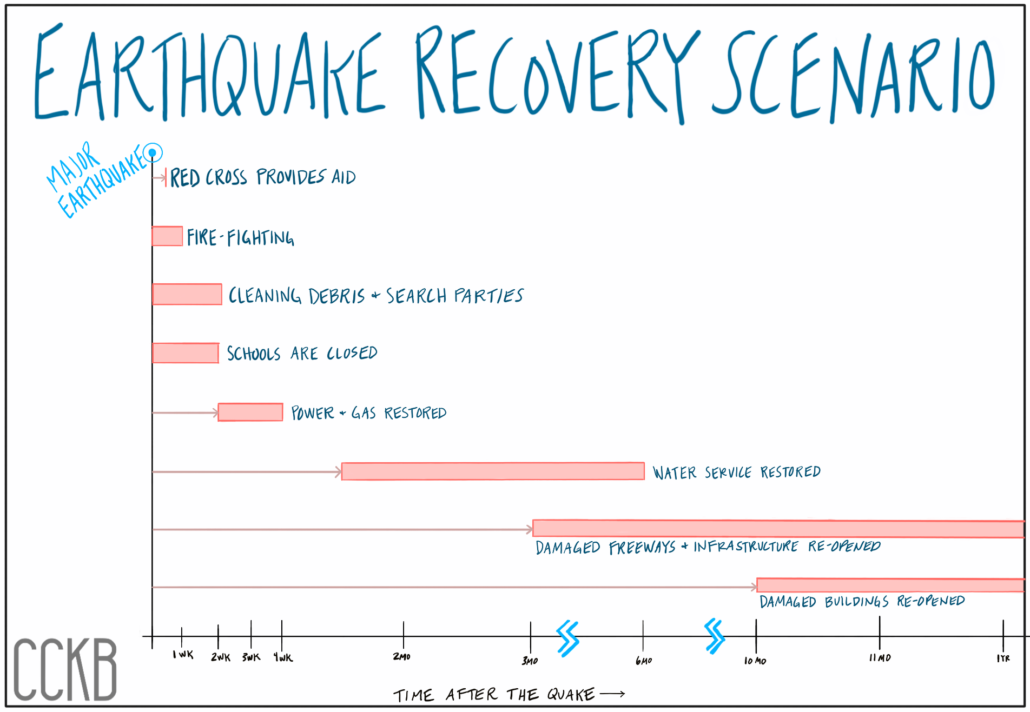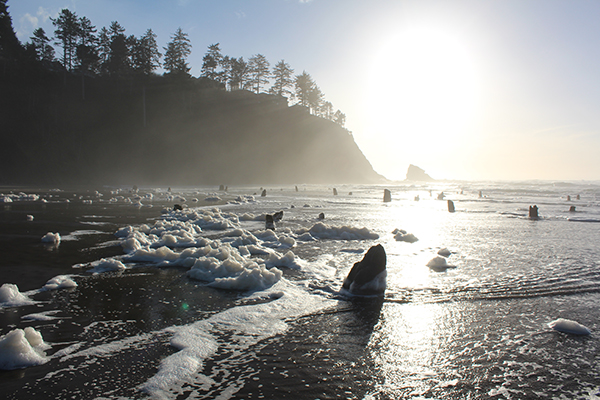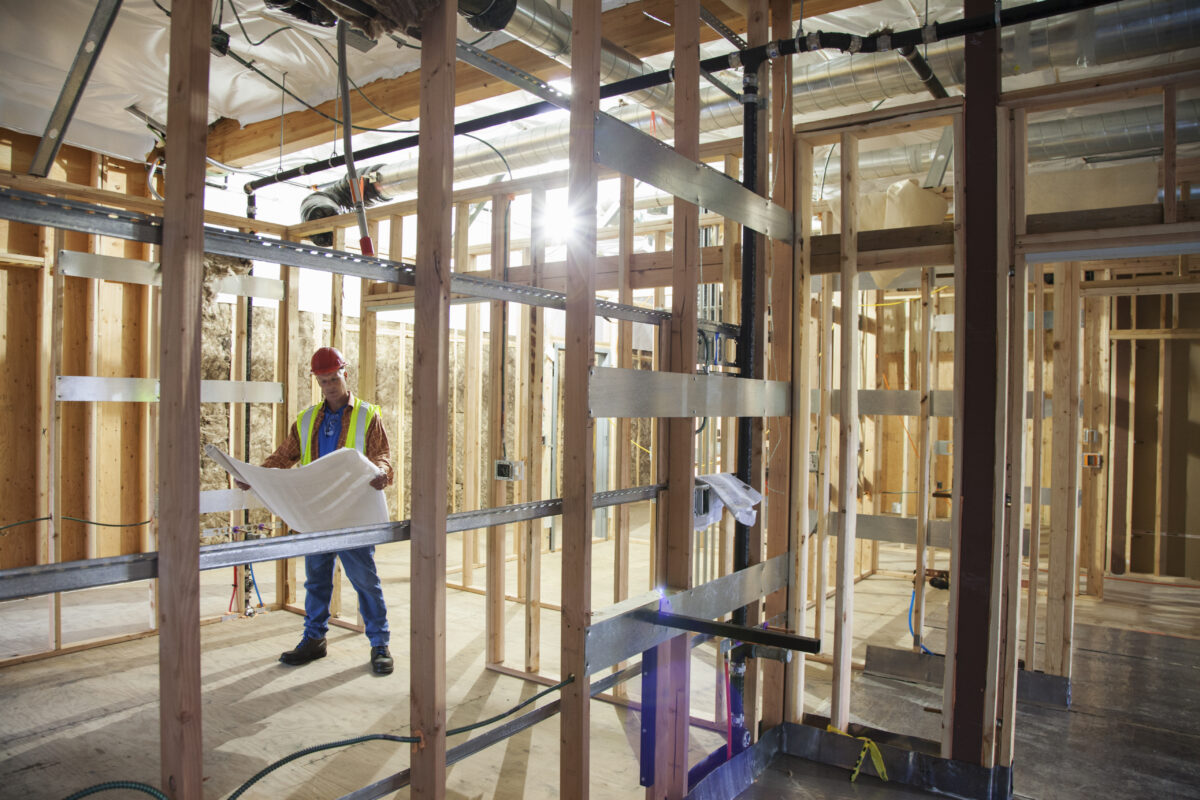The “Big One” hits California. You treated your injuries, and you made it home to your family and friends. Now what? When will life go back to normal? How long before help comes? How long will the recovery take?
This is part 4 of our series on what to do before, during, and after an earthquake! Catch up on the previous articles:
What Should I Do Before The Next “Big One”?
What Should I Do During An Earthquake?
What Will Happen in the Aftermath of a Major Earthquake?
The Earthquake Hits
When the earthquake hits, past earthquakes like the 1994 M6.7 Northridge earthquake and USGS’s M7.0 HayWired Scenario show us what is likely to occur. See the timeline below for a sense of how long recovery will take.
Immediately after an earthquake, there will be fires, explosions, flooding, damaged buildings, some collapsed or partially collapsed buildings, closed freeways and transit lines, and impacted power, water supply, and phone networks. Within an hour, the government will declare a state of emergency.
On Your Own After The Earthquake
For the first three days following a major earthquake, the Federal Emergency Management Agency (FEMA) states you should be prepared to be self-sufficient. What will you need to survive on your own for three days? Think of your basic needs, review tips from SF72.org, and prepare for the worst.
When the “Big One” hits near a large metropolitan area, hundreds of thousands of people will be homeless. The American Red Cross will have emergency shelters and means to distribute water and food within three days. The Red Cross estimates that only 25% of displaced people will use emergency shelters. The others will shelter with family or friends, or camp in their yards. If your home is no longer safe to live in, where will you live?
The photograph below, taken by Jeanette Ortiz-Osorio of American Red Cross, shows the Red Cross handing out food, water, and aid. The emergency shelters are in the background.
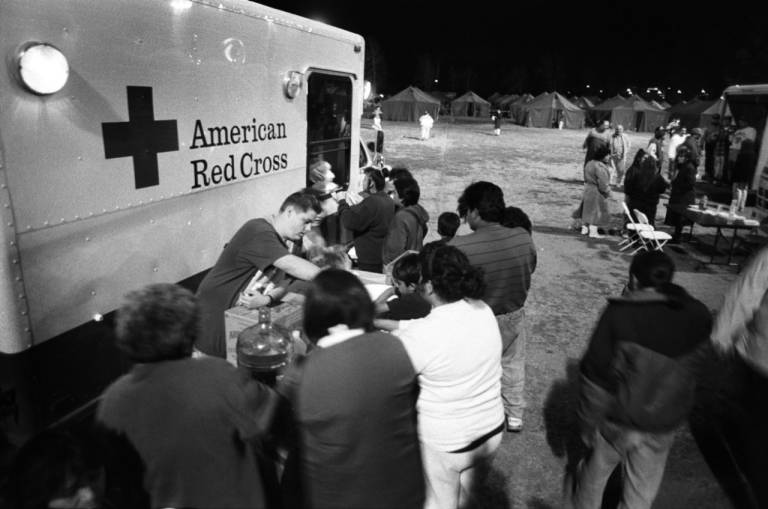
First Week After The Earthquake
In the first week, rescue workers will be finding trapped people, and people will be working to clear debris. Schools will not be reopened yet. Gas stations won’t be functional since the power will be out. People will need to use portable e-commerce hardware to accept credit cards. Most areas will be without gas and water. The majority of the aftershocks will occur within the first week after the earthquake.
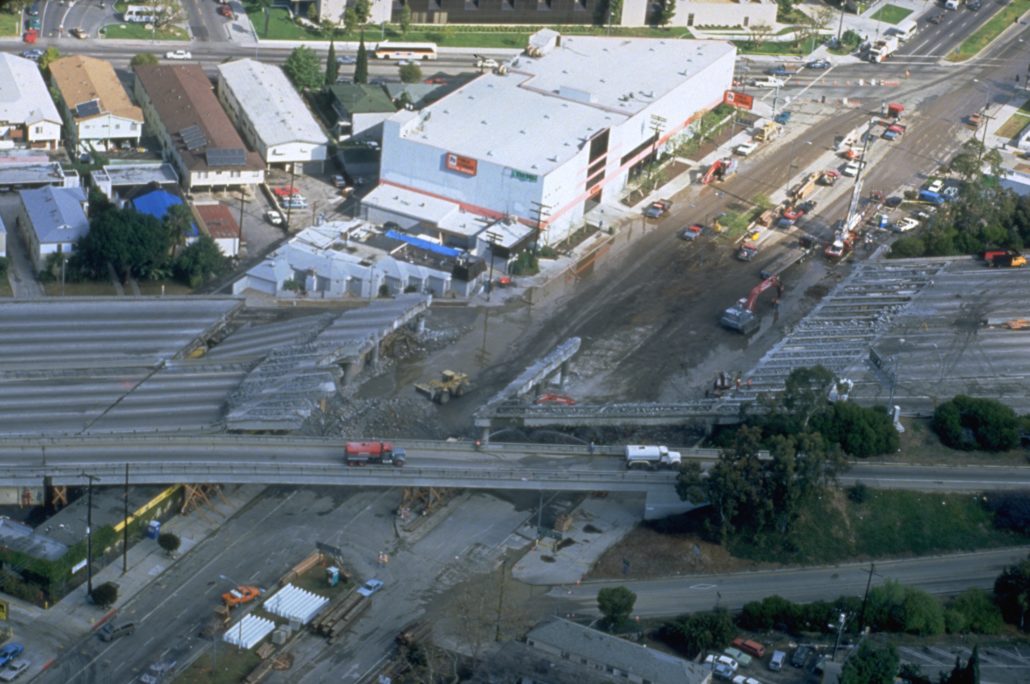
Getting Back To “Normal”
USGS’s HayWired Scenario shows that the basics of life will eventually get back to normal – or a “new normal.” Kids will go back to school after a few weeks, and people will go back to work. Power and gas will come back fully between two weeks and one month. Between six weeks to six months, the municipal utility districts will have full water service restored. It will take three months to a year for all freeway and major infrastructure to be fixed and reopened. It could take at least ten months for damaged older steel-framed high-rises and apartment buildings to be usable again.
The Next Major Earthquake
Want to learn more about what to expect for post-earthquake life? Check out these photographs and this video from after the 1994 M6.7 Northridge earthquake, read more about the HayWired Scenario, and watch the Preparedness Now video from USGS. Don’t miss out – prepare your earthquake bag now to make your earthquake recovery easier.

